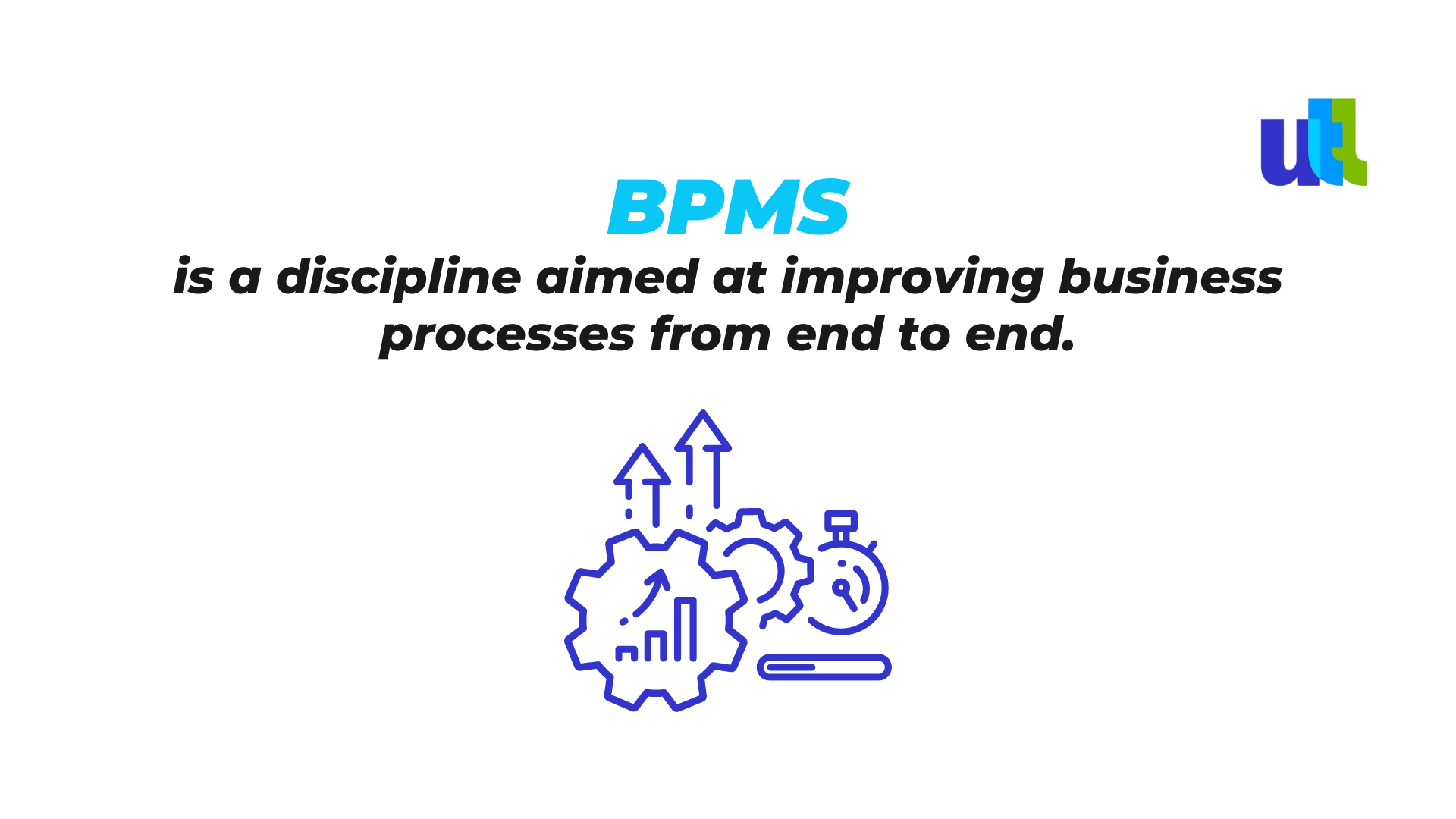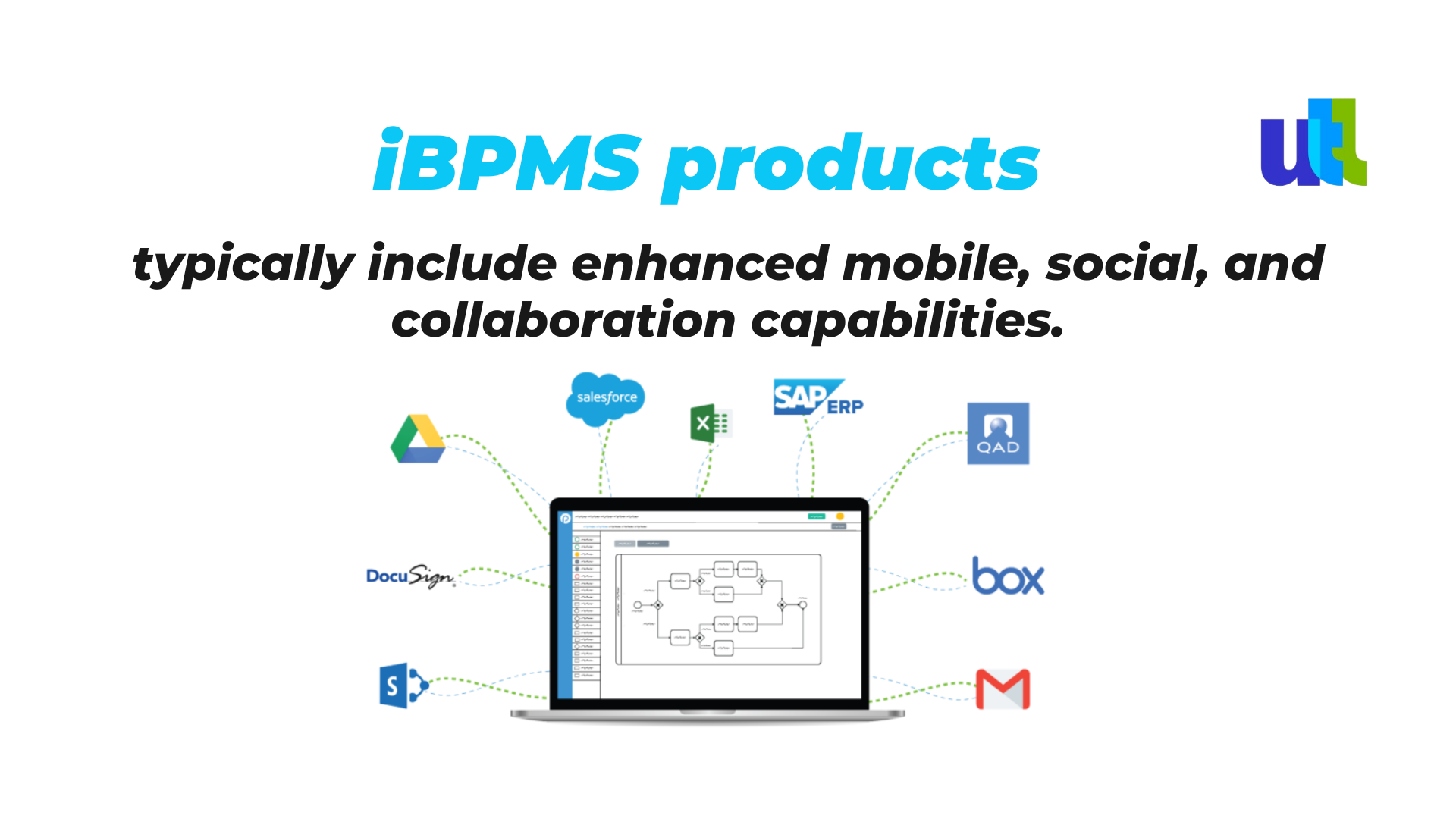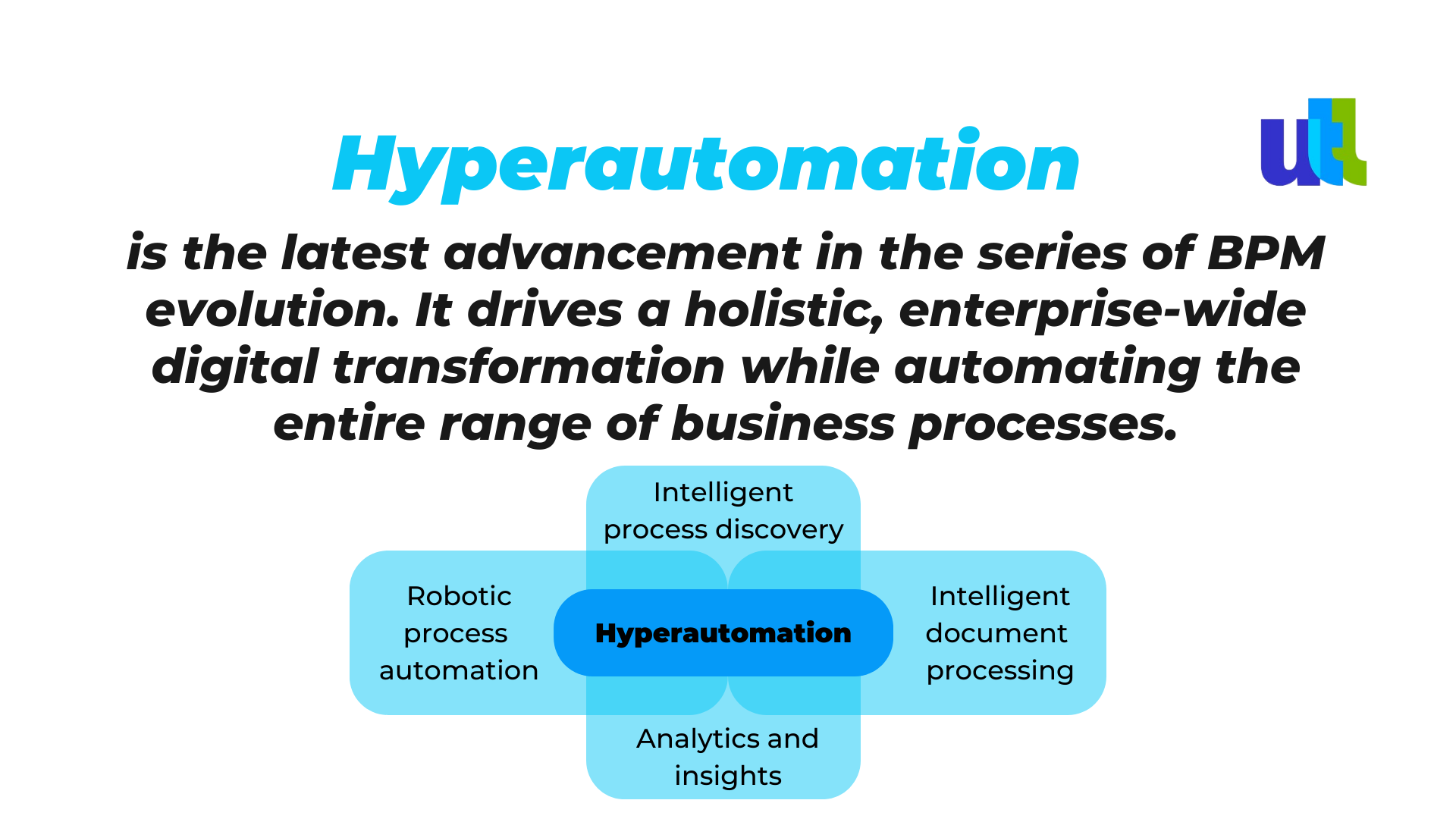Effective business process management lies at the heart of not only hyperautomation success, but any other sort of digital transformation or process automation project, whether it is large or small. In fact, one could say BPM helps achieve business success in general.
What is business process management software (BPMS)?
Business process management software (BPMS) was created to help companies design, model, execute, automate and improve a set of activities and tasks while achieving an organizational goal. These activities and tasks make up what is called a “business process”.

- Process engine for modeling processes and web applications;
- Data collection and business analytics;
- Content management system (CMS);
- Collaboration tools;
- Cloud or on-premises deployment.
All in all, BPM is not a one-and-done project. But instead, it provides a framework for the continuous creation, analysis, and improvement of business processes, including the ongoing distribution of job roles and responsibilities.
This business process management suite (as it is sometimes called), is a collection of technologies that usually include the following:
- Process mining tools: These are used for the discovery, representation, and analysis of the tasks that drive business processes;
- Business Process Modeling Notation (BPMN): BPMN is responsible for diagraming business processes;
- Workflow engines: They are necessary to automate the flow of tasks that complete a business process;
- Business rules engines (BREs): BREs enable end users to change business rules without the help of a programmer;
- Simulation and testing tools: That enable developers to observe how processes behave before starting to write a code.
Is it the same as Project management tools?
No. Unlike automation-based BPM software, project management tools take a far simpler approach and require more hands-on input. It is useful for managing projects at their early stages.
Is it like workflow management systems?
And again - no. Workflow management systems automate business tasks so work can be routed efficiently to the staff with the best capacity to handle it, while BPM software focuses on automating repeatable business activities and services.
Business process management is significantly more complicated and involves ongoing improvements across the entire organization.
The 6 trends that drive the evolution of BMP:
- Citizen developer tools democratize BMP
- Intelligent business process automation increases efficiency
- BMP functionality is incorporated into major software projects
- Automated process discovery provides a complete blueprint for enterprise process
- Adaptive process management supports agile process modeling
- BMP mainly focuses on customer and employee experience
iBPMS
In recent years, the market has seen the emergence of the so-called “intelligent BPM suites” (iBPMS). The term was introduced by the consultancy Gartner Inc. and referred to the introduction of sophisticated technologies, such as real-time analytics, complex event processing (CEP), business activity monitoring (BAM), and artificial intelligence (AI). These technologies have made process automation more dynamic, and data driven.

Furthermore, they increase the use of low-code/no-code (LCNC) technology which means that businesses do not have to depend solely on professional coders to optimize their business processes. Instead, business analysts, business users, and process developers can work together on their common goals.
Many iBPM also allow users to pull and leverage data from external sources such as IoT devices and social media.
Practical examples of the business processes that can be improved by BPMS systems:
- Account management
- General departmental processes
- Budget management
- Claims management
- Compliance management
- Customer orders and requests
- Employee onboarding
- Human Resources
- Back office
- Inventory and facilities management
- Invoice processing
- Performance monitoring
- Project tracking
- Workflow tracking
And, of course, many more.
What is hyperautomation?
Hyperautomation represents the next frontier of business process automation. And it connects the two main processes:
1. It enables the automation of any repetitive task, even those that are undocumented and rely on unstructured data. It does so by combining traditional automation tools (RPA and workflow automation) with Machine Learning (ML).
2. It does not aim at automating as much as possible, but rather focuses on creating a self-perpetuating, self-healing automation ecosystem.
Exactly like in the case of BPM, the term “hyperautomation” does not describe any singular technology or methodology. It is rather an advanced approach to enterprise automation and a toolbox of the latest technologies (such as process mining, RPA, AI, business process management (BPM) and intelligent business process management suites (iBPMS), integration platform as a service (iPaaS), low-code/no-code tools, packaged software, and other types of decision, process, and task automation tools). Thus, an organization’s approach to hyperautomation will undoubtedly vary depending on its culture, digital maturity, and business goals.

How do I successfully implement hyperautomation in my business?
1. IDENTIFY YOUR BUSINESS GOALS: The purpose of hyperautomation is to improve your business processes and thus speed up your operations. But first, you need to identify automation opportunities and understand why you need automation and where you need it the most.
2. LEARN MORE ABOUT AVAILABLE TOOLS: Make sure you carefully research available automation tools that meet your goals. For instance, do you need low-code or no-code instances of hyperautomation if you don’t have an expert level of tech know-how in your firm?
A good starting point would be to study some hyperautomation use cases from your industry competitors who are already leveraging the tech.
3. MAKE SURE YOUR CHOSEN TOOLS ARE SUSTAINABLE: Pick sustainable, future-conscious tools that introduce digital transformation today but also have the potential for growing with your business tomorrow.
The role of BPM in hyperautomation
Hyperautomation is the latest advancement in the series of BPM evolution. It drives a holistic, enterprise-wide digital transformation while automating the entire range of business processes.
By ensuring end-to-end processes are documented and optimized, BPM enables organizations not only to scale automation, Artificial Intelligence, and other cutting-edge technologies, but continuously improve and integrate such investments. In fact, iBPMS technology suites are one of the key pushing technologies in the hyperautomation process.
Hyperautomation goes well beyond process excellence. It combines the most efficient technologies to empower enterprises by offering the following advantages:
- Enterprises can significantly optimize the effort of knowledge workers (by leveraging RPA for automating mundane tasks and operational workflows and handling exceptions and inconsistencies through the deployment of trained bots.
- AI and ML-enabled tools are used for examining, interpreting, and processing data.
- Process mining enables monitoring and analysis of process performance for continuous improvement and identifying new opportunities for optimization and automation.
- It leverages low-code capability to rapidly develop and deploy business-critical applications without compromising on governance and with fostering powerful collaborations between business owners and IT and facilitating the deployment of other technologies.
Processes are the foundation of every business. The way processes are organized, analyzed, measured, and enhanced influences key business performance indicators.
For free consultation about business process management (BPM) click here.
----------------------------------------------------------------------------------------------
View the full presentation:
WRITTEN BY
Sofia Kutko
2022-11-14


































































































































































































